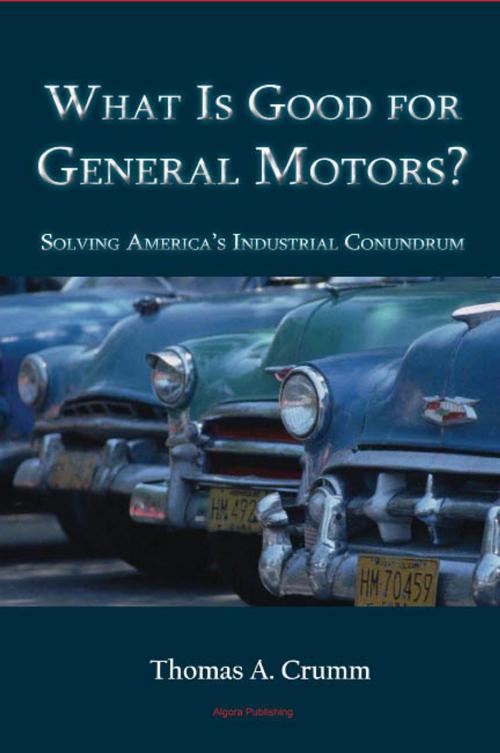What is Good for General Motors?
Solving America's Industrial Conundrum
Business & Finance, Management & Leadership, Industrial Management| Author: | Thomas A. Crumm | ISBN: | 9780875867793 |
| Publisher: | Algora Publishing | Publication: | December 15, 2009 |
| Imprint: | Algora Publishing | Language: | English |
| Author: | Thomas A. Crumm |
| ISBN: | 9780875867793 |
| Publisher: | Algora Publishing |
| Publication: | December 15, 2009 |
| Imprint: | Algora Publishing |
| Language: | English |
Tom Crumm thinks the American auto industry can regain the world leadership it once enjoyed in design, manufacturing and sales of world-class quality vehicles and profitability. There are nearly a million American jobs at stake and when the ideas in this book spread to component and other industries it becomes fuel for discussion of a turnaround of Americas industrial sector and a turnaround of the economy.
General Motors CEO Roger Smith was a visionary and fully realized that change was needed at GM. Tom Crumm played a vital role in the rethinking that was to help the company steer a new course; as a strategic planner he was deeply involved in the creation of the Saturn project in 1985.
Many lessons may be learned from Saturns rise and fall that could be used to further the understanding of how the American manufacturing sector can be restored to its world class position. These include:
- corporate culture and leadership, or the lack of it
- the integration of technology and workers
- employee empowerment and labor relations
- supplier relations and vertical integration
- and sales philosophy and customer satisfaction
The biggest threat to a workers job is an unprofitable company. Accordingly, the adversarial relationship with the company was not in the best long term interest of union members. The union had to change as well as the company. This point and the whole discussion will be of compelling interest to all who want to know what happened to Americas auto making capability.
Others have recently tried to explain what went wrong in the auto industry. 'Crash Course' by Paul Ingrassia, for instance, shows that the author had extraordinary access to behind-the-scenes meetings and conversations -- but he has little to say about engineering, manufacturing, or product development. This book addresses just those practical areas where productive change can be made.
Tom Crumm thinks the American auto industry can regain the world leadership it once enjoyed in design, manufacturing and sales of world-class quality vehicles and profitability. There are nearly a million American jobs at stake and when the ideas in this book spread to component and other industries it becomes fuel for discussion of a turnaround of Americas industrial sector and a turnaround of the economy.
General Motors CEO Roger Smith was a visionary and fully realized that change was needed at GM. Tom Crumm played a vital role in the rethinking that was to help the company steer a new course; as a strategic planner he was deeply involved in the creation of the Saturn project in 1985.
Many lessons may be learned from Saturns rise and fall that could be used to further the understanding of how the American manufacturing sector can be restored to its world class position. These include:
- corporate culture and leadership, or the lack of it
- the integration of technology and workers
- employee empowerment and labor relations
- supplier relations and vertical integration
- and sales philosophy and customer satisfaction
The biggest threat to a workers job is an unprofitable company. Accordingly, the adversarial relationship with the company was not in the best long term interest of union members. The union had to change as well as the company. This point and the whole discussion will be of compelling interest to all who want to know what happened to Americas auto making capability.
Others have recently tried to explain what went wrong in the auto industry. 'Crash Course' by Paul Ingrassia, for instance, shows that the author had extraordinary access to behind-the-scenes meetings and conversations -- but he has little to say about engineering, manufacturing, or product development. This book addresses just those practical areas where productive change can be made.















